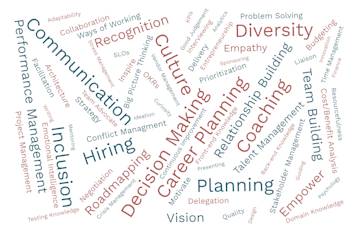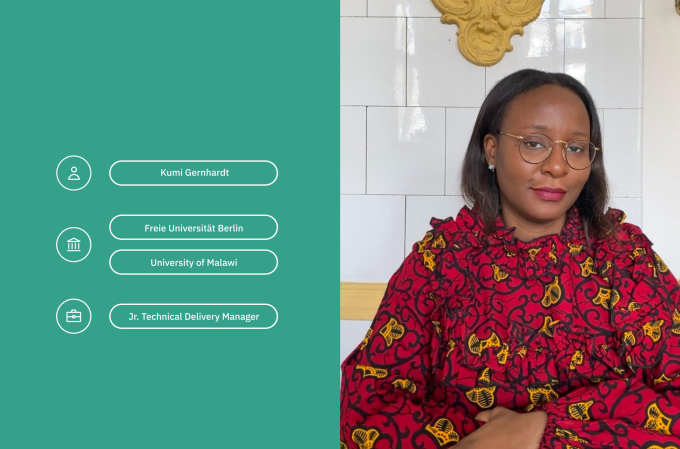
What makes a good engineering manager?
N26 engineering manager Christena Jethwa discusses pathways and resources for developing engineers in management roles.
5 min read
Prior to joining N26 as an engineering manager, I’d experienced many twists and turns in my career of 20+ years. I switched between engineering and product roles, positions in management and as an individual contributor. I’d always considered myself a Jill-of-all-trades, and the breadth of my career helped developed skills that I now use regularly as an engineering manager.
The role of an engineering manager
Engineering management has evolved over the years from the de facto promotion for senior engineers into its own distinct career path. Additionally, it requires a more diverse skill set than it once did. In 2004, I took on my first role as an engineering manager, simply because I was the most senior backend engineer in the team. I was expected to be the backend expert, coordinate with the frontend team, and deliver solutions for our clients on time, all while managing the junior developers.

Fast forward to today—managing people is now the most critical part of my role, rather than an afterthought. As an engineering manager (or EM for short), you need to track performances and outcomes, shape and protect your organization’s culture, lead the team toward a common vision, guide them with a clear mission and roadmap, and manage stakeholder expectations. You also need to provide emotional support, mentorship, coaching, and career planning for your team.
When promoting engineers to an EM role, one of the most common mistakes is failing to provide the training and experience. What’s more, not everyone has the desire—or opportunity—to diversify their skills the way that I did. Given this, I’ll share with you some ideas on how to develop an EM incubator to identify management potential and prepare future engineering managers for the role.
Career planning for an engineering manager
Career planning conversations can help you spot and develop potential engineering managers. Remember, these discussions require vulnerability. They’ll be most effective when the manager-employee relationship is based on trust and psychological safety. I’ve been using the following framework to provide structure to these conversations.
Reflect
The first step in the process is to reflect on the engineer’s past experience—and by this I mean more than just glossing over their CV. This process involves an in-depth conversation about their motivations and the decisions that led them to this point in their career.
Envision
Have your employee envision potential versions of the future. Give them safety to talk outside the context of your company and their current role. Throw wild ideas out there for debate. Having this unrestrained set of possibilities helps you spot common themes.

Plan
The next step in the framework is to collaborate on an action plan to help the employee build skills and gain experience. Our team developed an “action library” containing roles, competencies, and suggested actions to jump-start the process.
Act
The last step in the framework is for your employee to execute their action plan. Make sure you check in regularly on their progress. Repeat the process with a regular cadence, always focusing on new learnings. Most importantly, don’t forget to celebrate their progress along the way.
EM builder’s kit
Set your future EMs up for success by providing them with tools to learn, prepare, and grow into the role. Here are some of my favorites:
The Work Values Inventory
During career planning, it can be useful to check in on what values are important to the employee. The Work Values Inventory from Philadelphia University is an excellent source for this. Just remember, values can change, especially after major life events, so it can be good to revisit these periodically.
CliftonStrengths from Gallup
CliftonStrengths from Gallup can help your employee understand their natural talents, develop them into strengths, and define their unique value proposition.
Zenger Folkman’s The Extraordinary Leader™
I had the benefit of going through The Extraordinary Leader program from Zenger Folkman a few years ago. It’s a data-driven, strengths-based development program that I can highly recommend.
Cultural Navigator®
Consider using Cultural Navigator to develop cultural literacy. Everyone has many cultural dimensions that all influence their preferred interaction style, style of thinking, and sense of self. Some of the biggest challenges I have faced in my career as a manager have been related to differences in these preferences.
Bunch AI Leadership Coach
Bunch provides quick leadership coaching tips each morning.

Start an engineering manager support group
Form a group where current and aspiring engineering managers can gather and talk candidly about challenges and tactics that work. At N26, we call this our EM Academy.
Stretch opportunities
Be sure to give aspiring EMs stretch opportunities. These are low risk opportunities for the engineer to experiment with various aspects of an engineering management role. Some examples of stretch opportunities are developing a tech roadmap, leading a working group, or coaching a junior engineer.
Role transparency
It’s important to have a clear definition of the role. Provide examples of what a great EM looks like at your company, and make sure you talk openly about aspects of the position that your engineers can’t see. Not only will this help them pursue engineering management with eyes wide open, it also creates a dialog that can give you insight into how they would handle the role.
IC career path
There’s a fabulous article by Moz founder, Rand Rishkin, titled “If Management is the Only Way Up, We’re All F’d.” By having a way for IC engineers to level up regardless of whether they want to lead or not, you’ll not only have better retention of strong engineers, you’ll also help funnel people into engineering management who truly have a passion for leadership. Engineers at N26 have their own career progression separate from management, and we offer an internal mobility program for switching between the two paths.
A final note—finding my inspiration
My grandma was the original Jill-of-all-trades in my life. She grew up on a farm, ran away from home, worked tons of odd jobs, became a nurse, and eventually grew to be the owner, operator, and administrator of three nursing homes. I spent a lot of time with her at her workplace, and I saw her passion for her employees and residents. She was an incredible manager and leader with a variety of skills built through diverse experience. I recommend that anyone interested in engineering management look at examples of strong leadership inside and outside of engineering. And if you’re a Jill-of-all-trades, be proud to be part of a legacy of great women like my grandmother.
Find similar stories
By Christena Jethwa
Engineering Manager
11 min read
Related articles
These might also interest youTeam spotlight: Daria Milashenko, Executive Assistant to the CBO
When Daria Milashenko, Executive Assistant to the CBO at N26, visited Berlin at 15, it was love at first sight.
CGO Alexander Weber on the practice and profession of entrepreneurship
Now our CGO, Alexander Weber has been with N26 for nearly 8 years. Learn how he decided to study business and why he thinks being an entrepreneur is about vision, passion, and intrinsic motivation.
Jr. Technical Delivery Manager Kumi Gernhardt
Kumi’s career has taken many twists and turns—from a career in journalism to a Technical Delivery Manager at N26. Read on to learn how her passion for communication helped her forge her path.


